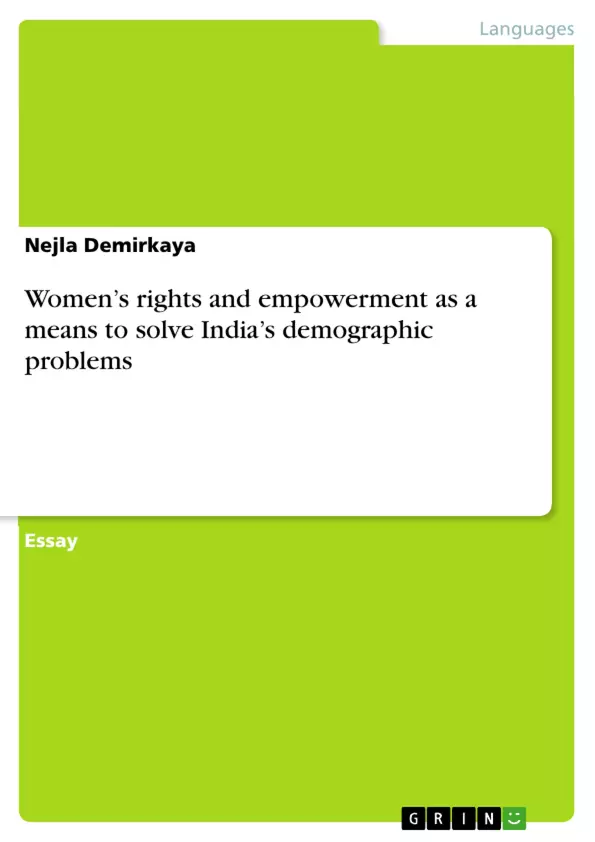India suffers from two crucial demographic crises that not only endanger the country’s political stability but also the lives and health of millions of its inhabitants: Overpopulation and gender imbalance. Both demographic phenomena are highly interconnected, yet they move in opposite directions: While overpopulation is going to remain a problem for the coming decades, recent developments give reason to hope for a stationary population, provided that fertility rates on state level either remain as they currently are or decline even further. Gender imbalance, however, continues to worsen in large parts of India.
The protection of women’s rights and the enhancement of their social and economic status are given utmost priority in the global battle against overpopulation and anti-female discrimination; many scholars argue that these may even be the single most important steps towards creating peaceful and just conditions for everybody. But can there be a panacea for the population problems of a country as complex and diverse as India? This essay attempts to show that women’s rights and empowerment have partially already proven to be the key solution, although it can unfold its potency only in conjunction with further factors and as an accompaniment of social developments that are often culturally and regionally specific.
Inhaltsverzeichnis (Table of Contents)
- Women's rights and empowerment as a means to solve India's demographic problems
- The demographic crises in India
- The contrast between the north and the south
- The relationship between education and fertility
- The impact of television and media on fertility
- The importance of female autonomy and reproductive decision-making
- The issue of sex-selective abortions
Zielsetzung und Themenschwerpunkte (Objectives and Key Themes)
This essay aims to explore the relationship between women's rights, empowerment, and India's demographic challenges. It analyzes the impact of these factors on fertility rates and gender imbalance, focusing on the distinct differences between northern and southern regions of the country.
- The correlation between women's education and fertility rates.
- The role of media and technology in influencing reproductive behaviors.
- The importance of female autonomy and reproductive decision-making.
- The prevalence and consequences of son-preference and sex-selective abortions.
- The complexities of demographic change and its relationship to social and economic factors.
Zusammenfassung der Kapitel (Chapter Summaries)
- The introduction highlights the interconnected nature of overpopulation and gender imbalance in India, emphasizing the need for addressing both issues. It argues that women's rights and empowerment play a crucial role in addressing these challenges.
- This section explores the significant differences in fertility rates and child sex ratios between northern and southern states, highlighting the need for region-specific analysis.
- Here, the essay investigates the complex relationship between women's education and fertility rates, considering both positive and negative correlations and acknowledging the influence of other social factors.
- This chapter examines the impact of television and media on fertility decline, particularly in rural areas, suggesting that these factors contribute to changing attitudes towards family size.
- The importance of female autonomy in reproductive decision-making is discussed in this section, acknowledging the limitations imposed by social norms and patriarchal structures.
Schlüsselwörter (Keywords)
Key concepts and terms discussed in this essay include: women's rights, empowerment, demographic challenges, overpopulation, gender imbalance, fertility rates, child sex ratio, education, media, female autonomy, reproductive decision-making, son-preference, sex-selective abortions, India, North-South divide.
- Quote paper
- Nejla Demirkaya (Author), 2012, Women’s rights and empowerment as a means to solve India’s demographic problems, Munich, GRIN Verlag, https://www.grin.com/document/307637



